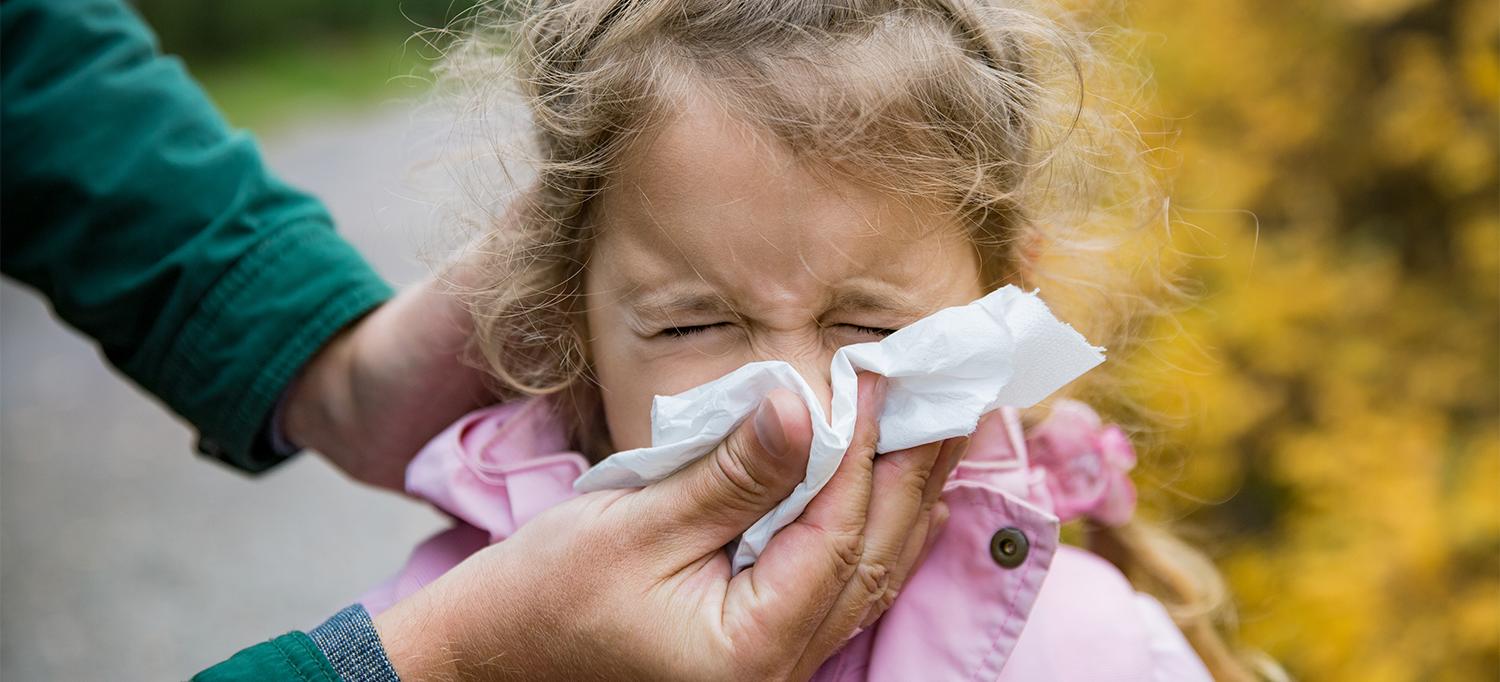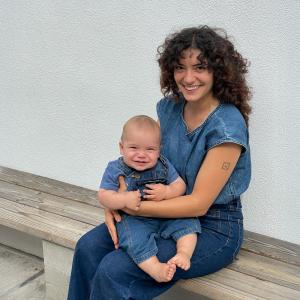
Photo: Suzi Media Production/Getty
If your child gets itchy eyes, runny nose, sneezing, or throat-clearing with the changing seasons, there’s a good chance they are reacting to pollen—a common cause of seasonal allergies. And if that’s the case, the doctors at the Pediatric Allergy Program, part of Hassenfeld Children’s Hospital at NYU Langone, have one crucial piece of advice: start medications early, and use them regularly throughout the season.
“If a child is allergic to pollen, getting ahead of symptoms, instead of reacting to them, can calm the immune system and provide greater relief,” says Kanwaljit Brar, MD, a pediatric allergy specialist with the Pediatric Allergy Program.
Nearly one in five children has seasonal allergies, and that number is likely to grow as climate change leads to longer pollen seasons and greater pollen production. In the New York City metro area, pollen from oak or birch trees is notorious for triggering springtime allergy symptoms. A child who has allergy symptoms during the summer may be reacting to grass pollen. Weed allergies make an appearance in the fall.
Waiting until your child is miserable from sneezing and sniffling may take much more medication to control symptoms, adds Anna H. Nowak-Wegrzyn, MD, PhD, director of the Pediatric Allergy Program. “Existing allergic inflammation creates an environment where more exposure to pollen creates more inflammation, so it’s a vicious cycle. You want to break the cycle or prevent it from beginning.”
Over-the-counter remedies, allergy shots, under-the-tongue tablets, and lifestyle changes can all help.
Over-the-Counter Medicines
First-line treatments for seasonal allergies are as close as the nearest pharmacy aisle. “You can buy all of them over-the-counter,” says Dr. Nowak-Wegrzyn. The best choices are antihistamines, steroid nasal sprays, and eye drops. “For children with severe symptoms, we can combine antihistamines and intranasal steroids,” explains Dr. Nowak-Wegrzyn. If your child needs daily therapy for persistent symptoms, intranasal steroids would be the choice, she adds.
Oral Antihistamines
Antihistamines in liquid or pill form can provide quick relief from seasonal allergy symptoms. Look for brand-name and generic versions of cetirizine, levocetirizine, loratadine, and fexofenadine. They generally work within 30 minutes and don’t make kids drowsy.
Speaking of drowsiness, allergists do not recommend diphenhydramine (brand name Benadryl) for children because it causes sedation and poses other safety concerns. Better to go with one of the newer, oral antihistamines, says Dr. Nowak-Wegrzyn, noting their long track record for safety and effectiveness.
Nasal Sprays
Steroid nasal sprays are great for reducing nasal passage swelling and irritation that causes congestion. Pediatric formulations include fluticasone propionate, fluticasone furoate, and triamcinolone. But unlike antihistamines, the effect is not immediate. You have to give it to your child consistently over a period of several days, or sometimes up to two weeks, before symptom relief kicks in.
Another option is azelastine, a nasal antihistamine approved for use without a prescription. This spray can ease a stuffy, runny, or itchy nose and sneezing but may cause drowsiness.
Eye Drops
If a child has a history of eye itching and watering, consider adding an allergy eye drop to the mix to soothe their itchy eyes. This can help reduce eye rubbing, which may introduce an infection, says Dr. Nowak-Wegrzyn.
Allergy Shots
If over-the-counter medications aren’t sufficiently relieving a child’s symptoms, allergy shots may be the answer. Most allergists don’t recommend them for children under 5. But they can be a great option for some school-aged children and adolescents. “If they’re on an antihistamine and a nasal steroid, and they’re still getting running nose and congestion, you would want to consider allergy shots,” says Dr. Brar.
To make an appointment with one of our specialists, visit the Pediatric Allergy Program.
Allergy shots are usually given every two to four weeks in the doctor’s office and work by desensitizing the immune system’s response to an allergen. “So, you’re not only treating a child’s symptoms, but you’re modifying their allergy,” Dr. Brar explains. A tiny amount of the allergy-provoking substance is placed under the skin. However, the relief is not immediate: “You may start to see symptom improvement after a year,” she notes.
Under-the-Tongue Tablets
Under-the-tongue tablets, also called sublingual immunotherapy, work the same way allergy shots do. The difference? No needles. Each dose is delivered via a dissolvable tablet placed under the child’s tongue. A doctor gives the first dose in the office and monitors for side effects. After that, the child takes one tablet daily at home during the allergy season. Currently, sublingual immunotherapy is approved in the United States for grass and ragweed allergies. It is not an option for children who are allergic to tree pollen, which is the most common spring allergen in the Northeast.
Lifestyle Adjustments
It is impossible to totally avoid pollen because it’s airborne and can travel long distances. To minimize your child’s exposure at peak times, monitor pollen counts in your area. When the counts are high, consider switching up your activities. “Instead of going to the park, go to the movies or stay indoors,” Dr. Nowak-Wegrzyn suggests. Keeping windows closed may reduce the amount of pollen inside your home or car. Having your child bathe or shower and change into clean clothes after being outside can reduce the spread of these allergens indoors.
Also, don’t forget about pets. Your dog or cat may be carrying pollen on their fur into your home. Consider wiping their fur after walking outside, bathing them more frequently, and keeping them out of your child’s bedroom.
When to See an Allergist
Children whose symptoms are well controlled don’t necessarily need allergy testing. But if over-the-counter medications aren’t working and your child is uncomfortable, an allergist can get to the root of the problem. Experts at the Pediatric Allergy Program can help your family navigate treatment options and the allergy testing process. In addition to doctors and nurses, the team includes a child life specialist, provided by Sala Institute for Child and Family Centered Care, who can provide comfort and support during testing.
See an allergist any time a child’s allergic condition becomes difficult to manage or leads to complications, like chronic ear or sinus infections, asthma attacks, or eczema flares. Additional prescription-only medications may be needed to control symptoms.
Allergy testing can provide peace of mind and important information as to the exact reason for your child’s sniffling and sneezing. “People sometimes attribute symptoms to pollen when it’s really a dust mite or pet allergy, and that may require year-round medication and different management strategies,” Dr. Brar points out.

